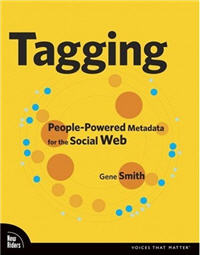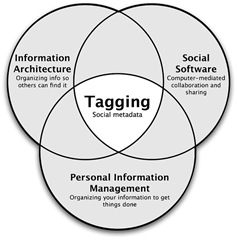Gene Smith is speaking about tagging at the Internet Bootcamp today, and he just mentioned that he recently wrote a book on tagging, entitled Tagging.
Tagging is a simple and quick way to add metadata to stuff you’re interested in, like photos, videos, blog posts and bookmarks
I read Gene’s book and commented on it on my blog, and am really glad to be able to hear him in person discuss tagging.
He presented a screencast movie about tagging with del.icio.us, which really started the craze toward tagging. Tagging is all over the place, and in the world of Web 2.0, tagging is becoming ubiquitous. Even Windows Vista has tagging!
Somebody just recommended the WordPress widget, Ultimate Tag Warrior. Another person mentioned Simple Tags.
I asked Gene the question about how to navigate the use of multiple words in tags, such as making phrases all one word, use spaces, underscores, hyphens, and the like. I find that I often make use of all the combinations and feel I do too much work to try to cover every base. His two-step response was exactly what I was looking for in an answer — do whatever you are doing and keep doing it consistently, as well as see what others are doing and continue to follow that (such as nv08). That is what I wanted to hear. With a lack of consistent standards out there, navigate it on my own.
To get started, tag your own blog posts, and then post / tag them to del.icio.us, and then follow the tags to see other people who have also tagged them similarly. Then, begin to see communities with your tags, such as nptech. Coordinating them with others, such as what we are doing here with nv08 for use at Google or even Flickr.
Gene will try to post these slides to SlideShare. Good idea!

